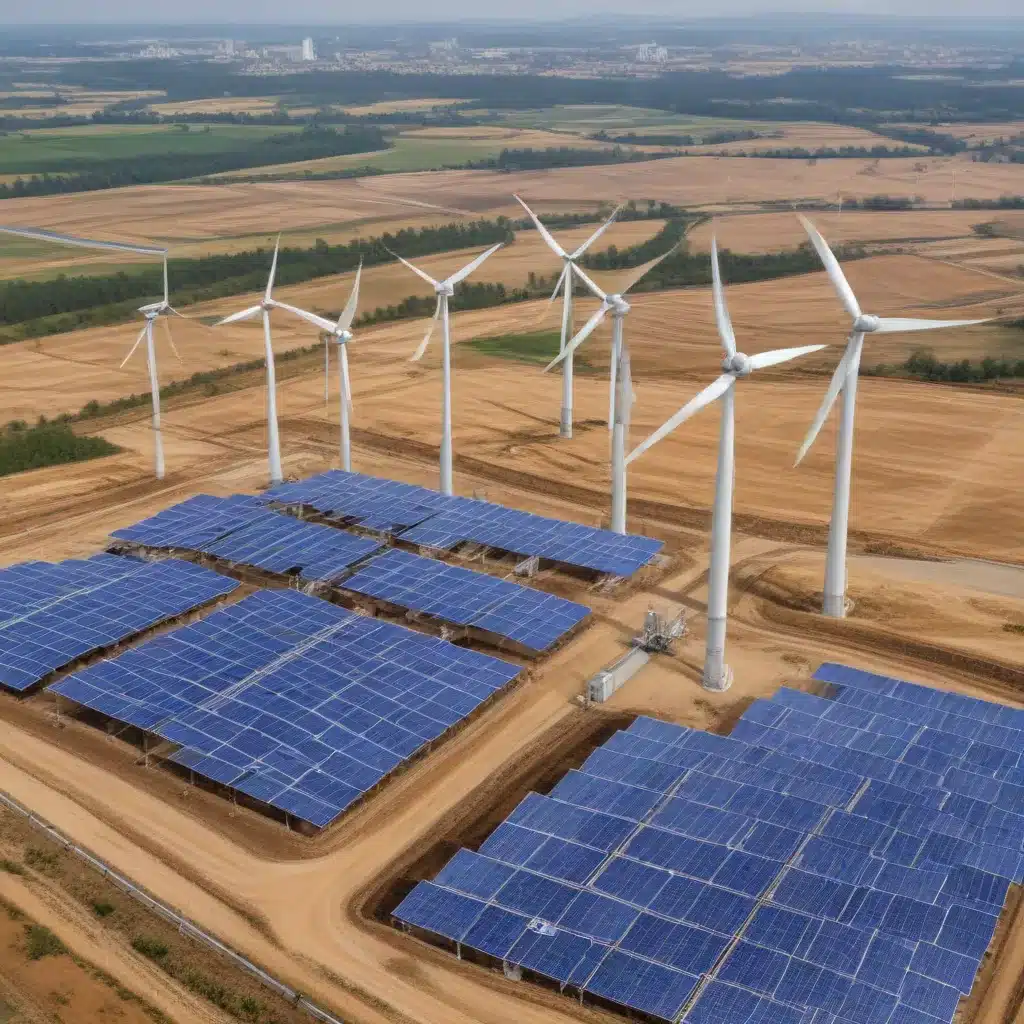
Unlocking the Potential of Renewable Energy in the Industrial Sector: Innovative Solutions
As Europe navigates its transition towards a sustainable energy future, the industrial sector emerges as a pivotal player in unlocking the full potential of renewable energy. This sector, responsible for a significant portion of the continent’s energy consumption and emissions, is poised to undergoan transformative shift, leveraging innovative technologies and strategic partnerships to drive decarbonization and economic growth.
Exploring the Benefits of Renewable Energy
The benefits of embracing renewable energy in industry are multifaceted. Wind power, solar photovoltaics (PV), and green hydrogen offer opportunities to reduce reliance on fossil fuels, lower greenhouse gas emissions, and enhance energy security. Renewable energy sources not only provide clean, inexhaustible power, but also create new economic possibilities through the development of associated industries and the generation of green jobs.
Overcoming Challenges in Adoption
However, the path towards widespread renewable energy adoption in the industrial sector is not without its challenges. Factors such as the upfront capital requirements, integration complexities, and the need for reliable energy storage solutions have historically hindered the seamless transition. Navigating these obstacles requires a concerted effort from policymakers, industry leaders, and financial institutions to create an enabling environment that supports innovation and investment.
Emerging Renewable Energy Technologies
Fortunately, the landscape of renewable energy technologies is rapidly evolving, offering new avenues for industrial decarbonization. Advancements in wind turbine designs, solar PV cell efficiency, and hydrogen electrolysis are driving down costs and improving the viability of these solutions. Integrating these technologies into industrial processes, such as combined heat and power (CHP) systems and power-to-X applications, can unlock significant efficiency gains and emissions reductions.
Innovative Solutions for Industrial Applications
Energy Efficiency Strategies
One of the key pillars in the industrial sector’s renewable energy transformation is the pursuit of energy efficiency. Implementing smart manufacturing techniques, upgrading equipment, and optimizing production processes can significantly reduce energy consumption and costs. Furthermore, the integration of digital technologies, such as the Internet of Things (IoT) and artificial intelligence (AI), enables real-time monitoring, predictive maintenance, and intelligent energy management, amplifying the impact of these efficiency measures.
On-Site Renewable Energy Generation
In addition to improving efficiency, the industrial sector is increasingly exploring the benefits of on-site renewable energy generation. Solar rooftop installations, wind turbines, and biomass cogeneration plants are becoming more prevalent, allowing companies to meet a portion of their energy needs through clean, locally-generated power. The adoption of Power Purchase Agreements (PPAs) and virtual PPAs further facilitates the integration of renewable energy into industrial operations, providing stability and predictability in energy costs.
Integrating Renewable Energy into Industrial Processes
Beyond on-site generation, innovative solutions are emerging that seamlessly integrate renewable energy into industrial processes. The use of green hydrogen, produced through the electrolysis of water powered by renewable electricity, presents a promising pathway for decarbonizing hard-to-abate industries, such as steel, cement, and chemicals. Similarly, the integration of thermal energy storage and waste heat recovery technologies can enable the efficient utilization of renewable-powered heat and steam within industrial facilities.
The Role of Government Policies and Incentives
Regulatory Frameworks
The transition to renewable energy in the industrial sector is heavily influenced by the policy landscape. Governments across Europe have implemented a range of regulatory frameworks, including emissions trading schemes, renewable energy targets, and carbon pricing mechanisms, to drive the shift towards cleaner energy sources. These policies not only create a supportive environment for renewable energy adoption but also incentivize industrial players to invest in innovative solutions.
Financial Incentives
Alongside regulatory measures, governments are also leveraging financial incentives to accelerate the adoption of renewable energy in industry. Schemes such as investment tax credits, feed-in tariffs, and green loan guarantees have helped to reduce the upfront costs associated with renewable energy projects, making them more accessible to industrial enterprises. Additionally, the mobilization of climate finance and green bonds has enabled the channeling of capital towards sustainable industrial transformation.
Stakeholder Collaboration
Fostering collaborative partnerships between the public and private sectors is crucial for unlocking the full potential of renewable energy in the industrial realm. Through initiatives like the European Future Energy Forum, industry leaders, policymakers, and academic institutions come together to share knowledge, showcase innovations, and explore innovative business models that drive the transition towards a decarbonized industrial landscape.
Addressing the Environmental Impact of Industrial Operations
Sustainable Manufacturing Practices
Beyond the integration of renewable energy, the industrial sector is also embracing a holistic approach to environmental sustainability. Circular economy principles, life-cycle assessment (LCA) methodologies, and industrial symbiosis strategies are being adopted to minimize waste, maximize resource efficiency, and reduce the overall environmental footprint of industrial activities.
Circular Economy Principles
The concept of the circular economy is gaining traction, encouraging industrial players to rethink their production and consumption models. By implementing strategies such as product reuse, material recycling, and industrial by-product exchanges, companies can unlock new sources of value while simultaneously reducing their environmental impact.
Life-Cycle Assessment Approaches
Complementing these circular economy initiatives, the industrial sector is also embracing life-cycle assessment (LCA) approaches to evaluate the environmental impact of their products and processes. By considering the entire life cycle, from raw material extraction to end-of-life disposal, companies can identify hotspots for improvement and make informed decisions to enhance the sustainability of their operations.
The European industrial sector stands at the cusp of a transformative shift, where renewable energy, innovative technologies, and collaborative partnerships converge to unlock a more sustainable and resilient future. By leveraging the strategies and solutions highlighted in this article, industrial enterprises can lead the way in decarbonizing their operations, contributing to Europe’s broader climate goals, and positioning themselves for long-term competitiveness in the global marketplace.







